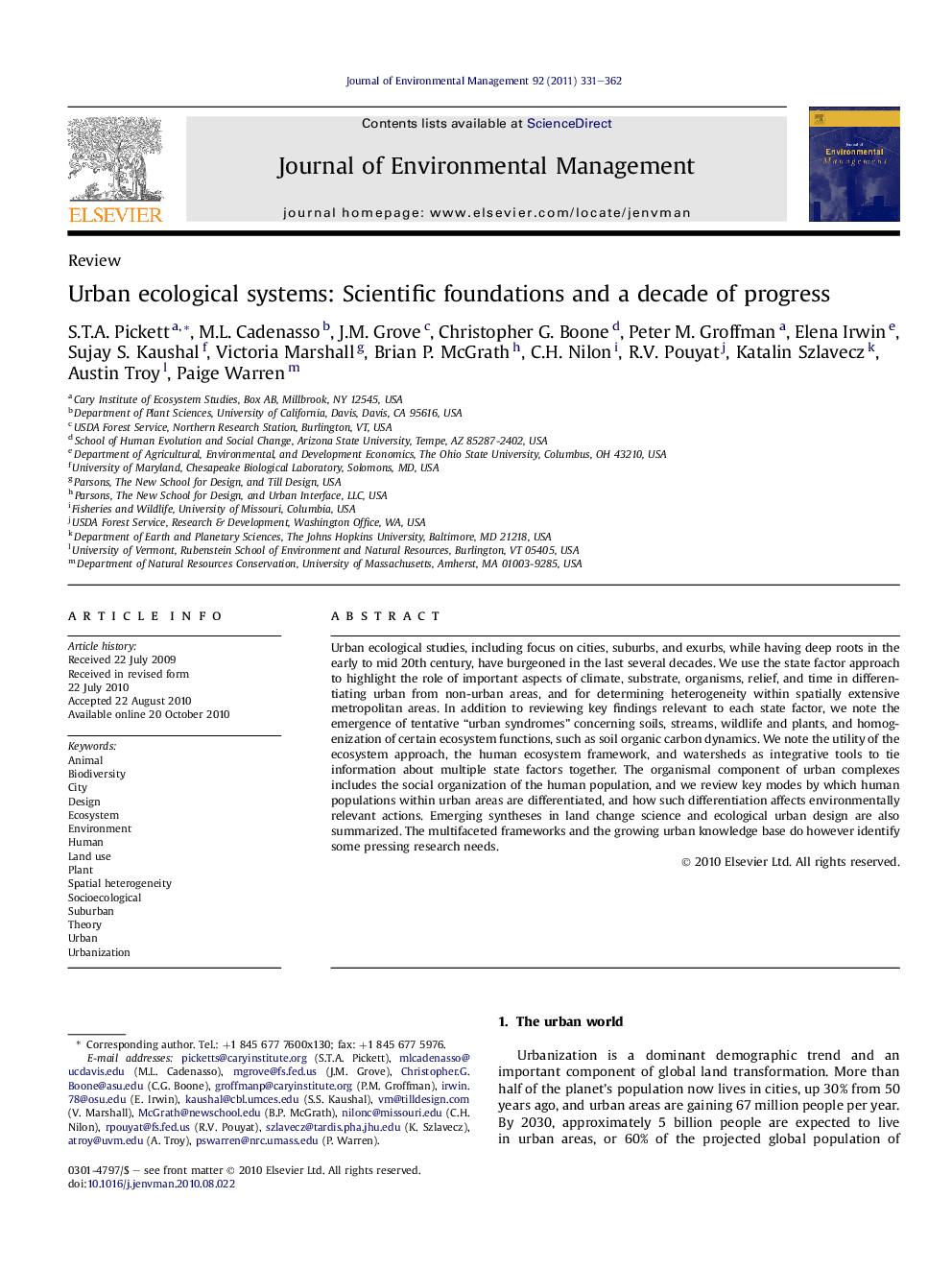| Article ID | Journal | Published Year | Pages | File Type |
|---|---|---|---|---|
| 10505497 | Journal of Environmental Management | 2011 | 32 Pages |
Abstract
Urban ecological studies, including focus on cities, suburbs, and exurbs, while having deep roots in the early to mid 20th century, have burgeoned in the last several decades. We use the state factor approach to highlight the role of important aspects of climate, substrate, organisms, relief, and time in differentiating urban from non-urban areas, and for determining heterogeneity within spatially extensive metropolitan areas. In addition to reviewing key findings relevant to each state factor, we note the emergence of tentative “urban syndromes” concerning soils, streams, wildlife and plants, and homogenization of certain ecosystem functions, such as soil organic carbon dynamics. We note the utility of the ecosystem approach, the human ecosystem framework, and watersheds as integrative tools to tie information about multiple state factors together. The organismal component of urban complexes includes the social organization of the human population, and we review key modes by which human populations within urban areas are differentiated, and how such differentiation affects environmentally relevant actions. Emerging syntheses in land change science and ecological urban design are also summarized. The multifaceted frameworks and the growing urban knowledge base do however identify some pressing research needs.
Keywords
Related Topics
Physical Sciences and Engineering
Energy
Renewable Energy, Sustainability and the Environment
Authors
S.T.A. Pickett, M.L. Cadenasso, J.M. Grove, Christopher G. Boone, Peter M. Groffman, Elena Irwin, Sujay S. Kaushal, Victoria Marshall, Brian P. McGrath, C.H. Nilon, R.V. Pouyat, Katalin Szlavecz, Austin Troy, Paige Warren,
